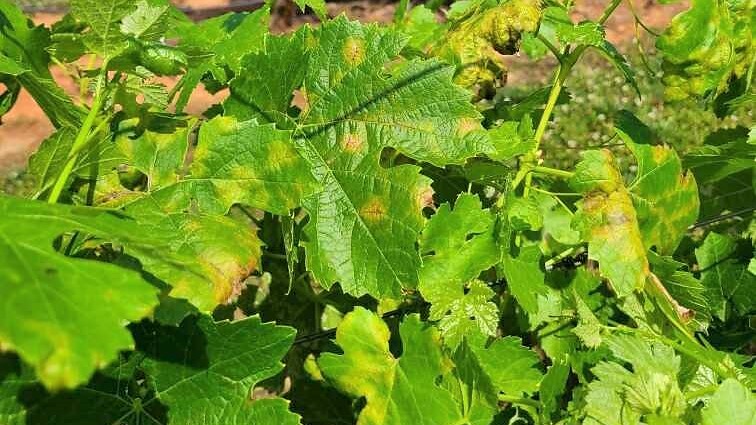
According to the University of Georgia Extension Viticulture Blog, downy mildew disease was discovered this week in the UGA Horticulture Farm grape research plots for the first time this year in Watkinsville, Georgia.
UGA Extension implores producers to be scouting throughout the state.
Also, growers need to incorporate highly efficacious materials into their spray programs as they move forward through the season. These include Zampro, Revus, Ridomil and Gold MZ.
Downy mildew spores can infect within a few hours when the leaves or fruit are wet. Dew counts for sufficient wetness. Adequate protection against the disease is a must for the duration of the season.
Symptoms of the disease include “oil” spots on the upper leaf surface with white, fluffy spore formation on the leaf underside. The important factor for grape producers to consider is protecting your leaves. Plants don’t do well without leaves.
Georgia’s humid and wet climate makes grape vineyards vulnerable to downy mildew during the growing season. Brannen cautions growers who are scouting for downy mildew to not confuse it with powdery mildew symptoms. In his Extension blog, Phil Brannen, University of Georgia Cooperative Extension fruit disease specialist said, “If you falsely identify downy mildew as powdery mildew, you are likely to start an aggressive spray program for powdery mildew that just allows the downy mildew to only get worse.”
Brannen provides a video on how to properly identify the presence of downy mildew.
To learn more about Georgia’s grape industry, visit extenextension.uga.edu/topic-areas/fruit-vegetable-ornamentals-production/grapes.htmlsion.uga.edu/topic-areas/fruit-vegetable-ornamentals-production/grapes.html.









